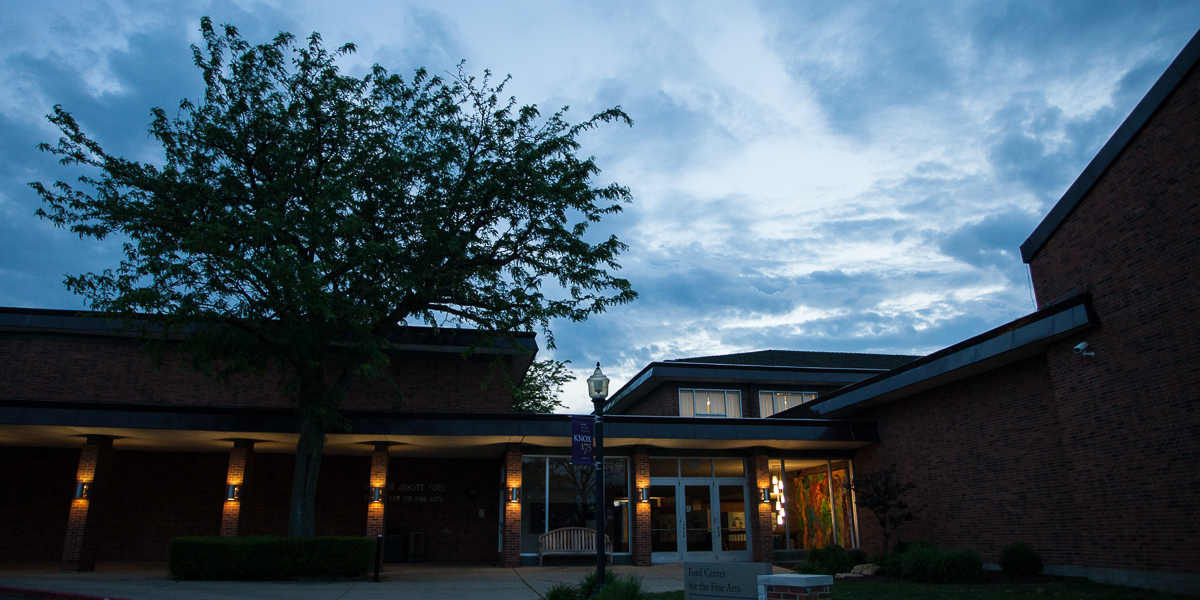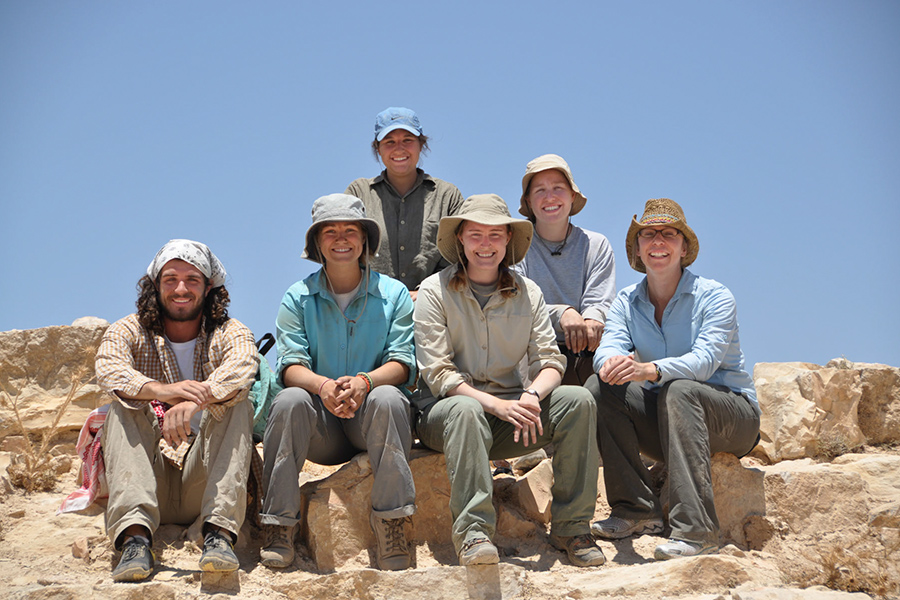

Venture Boldly

Office of Communications
2 East South Street
Galesburg, IL 61401


Knox College faculty Katherine Adelsberger (top right) and Danielle Steen Fatkin (bottom right) with other students and faculty from Knox and Macalester colleges, at the Dhiban Excavation and Development Project in Jordan.
The big story in the Midwest this year -- hot, dry weather -- is old news in the Middle East, where scarce rainfall has been a critical problem for thousands of years, according to a Knox College faculty member who has been in Jordan all summer, studying ancient methods for storing water.
Katherine Adelsberger, assistant professor of environmental studies, is conducting excavation and analysis at Tall Dhiban, a 5,000-year-old site located near the modern town of Dhiban, south of Amman, Jordan.
"I'm investigating architectural finds that we made in 2010, in order to determine whether they indicate water storage activities," Adelsberger says. "If they do, I'll examine artifactual and radiocarbon evidence for the period of their use."
Through the month of July, Illinois' weather was among the warmest and driest on record, according to the state climatologist. For the first half of 2012, the statewide average rainfall of 14 inches is 40 percent below normal for Illinois, but not much different than scholarly estimates of rainfall in the semi-arid climate of the Middle East (PDF). The average temperature in Illinois in July 2012 was close to 82 F, the second highest on record.
"Summer temperatures in Jordan are usually in the low- to mid-nineties, with a few 110-degree days," Adelsberger says. "We all try to take breaks in the shade of our Bedouin tent and drink plenty of water, especially when it's this hot.
"The students have a very positive attitude, which is important when you're participating in hard, physical labor in the sun for six full weeks."
The Dhiban Excavation and Development Project in Jordan is co-directed by Adelsberger and Danielle Steen Fatkin, visiting assistant professor of history at Knox, along with faculty from the University of Liverpool, England and the University of California-Berkeley. The project has drawn students from Knox and other colleges in the Associated Colleges of the Midwest. The project includes a field school administered by UC-Berkeley.
Adelsberger and Fatkin also conduct laboratory work at Knox using data gathered at Dhiban, and one of the Knox students currently in the field school, Alex Greer, researched pottery with Fatkin during 2011-2012.
Adelsberger, Fatkin and their collaborators presented some initial results in 2011 at the annual conference of the Geological Society of America. They found evidence that ancient occupants of Tall Dhiban stored rainwater both by building cisterns and also using natural features, known as karsts, which are depressions in the landscape where water collects.
Adelsberger and Fatkin have been working in Jordan since 2009. Their work has been supported by grants from Dushan Petrovich '74, chair of the Knox College Board of Trustees, and his wife Nancy, and from the Faculty Career Enhancement (FaCE) program of the Associated College of the Midwest.
When not busy with the research this summer, the group traveled around Jordan. "We visited Jerash -- one of the best-preserved Roman cities -- Petra, and the Dana Nature Reserve in the south," Adelsberger says. "These are famous sites, but they also help students to understand the regional context of the material we find at Dhiban. When students pick up some pottery and wash it in the lab, they know something about the people who made it."
Adelsberger joined the Knox faculty in environmental studies in 2008. She holds The Douglas and Maria Bayer Endowed Chair in Earth Science. Fatkin has taught at Knox since 2008.
Published on August 13, 2012